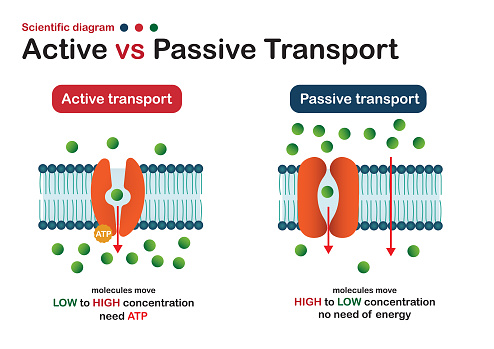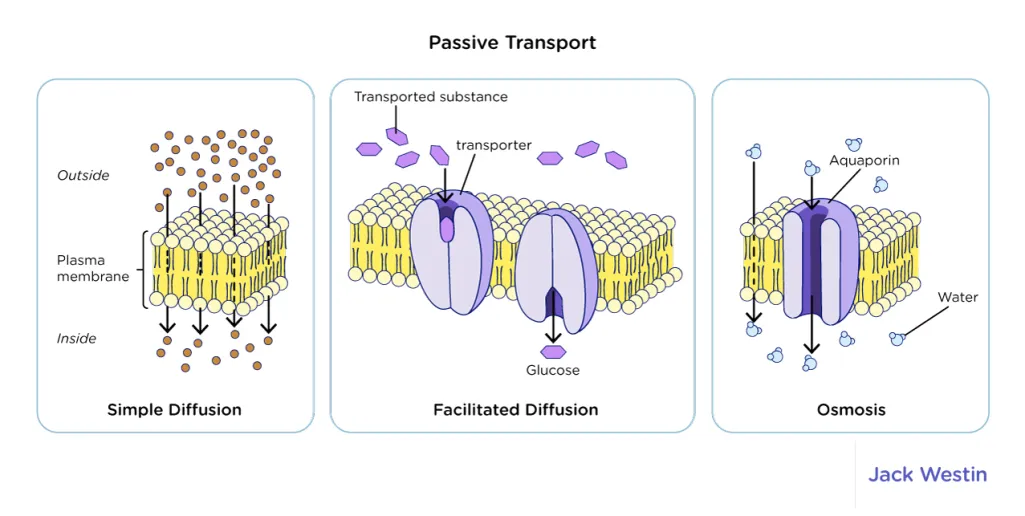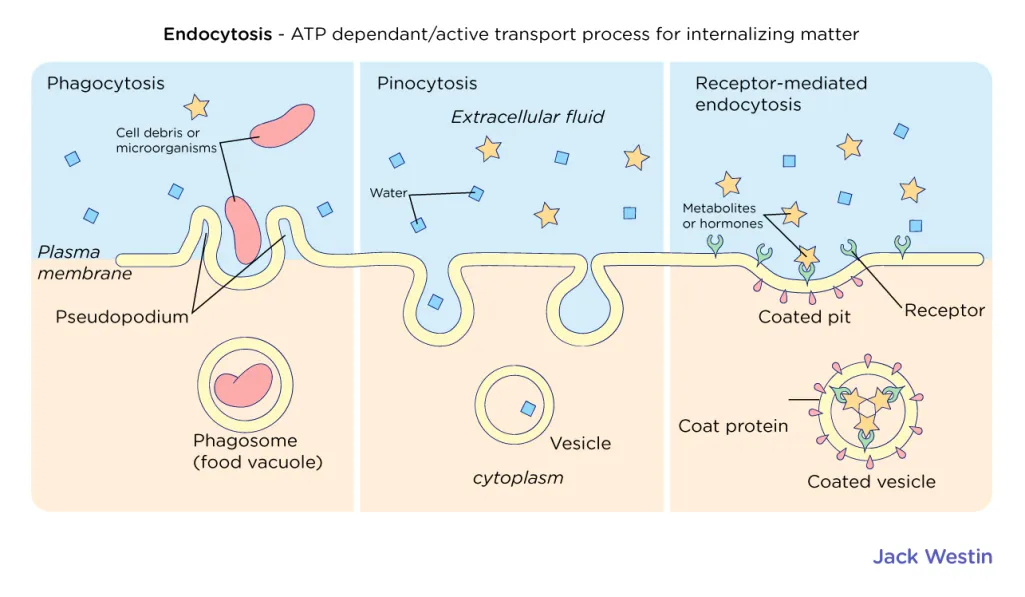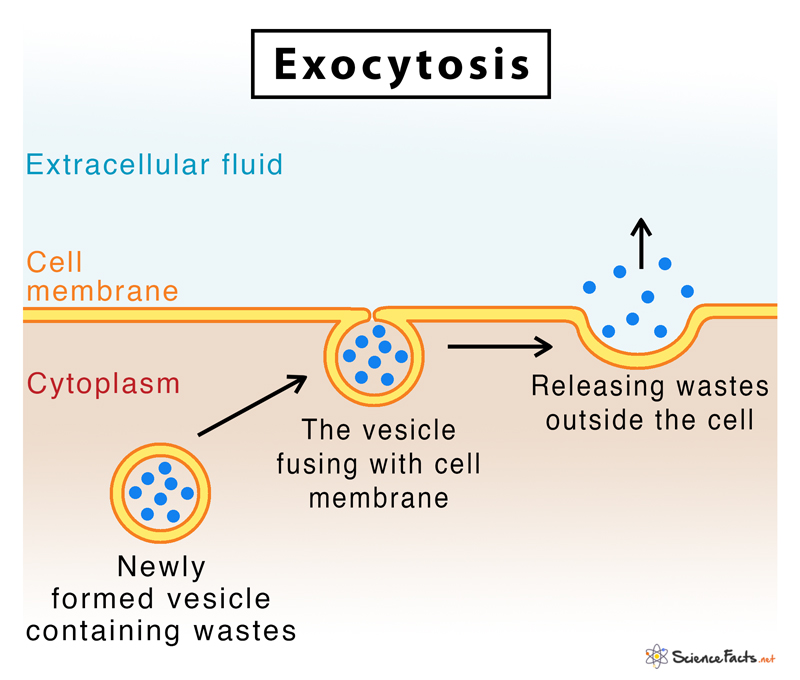Jed Quiaoit
AP Biology 🧬
358 resourcesSee Units
Public Transit... in Cells?
The cell membrane, also known as the plasma membrane, is a thin and flexible barrier that surrounds the cell and separates the interior of the cell from the external environment. 🦠
It is made up of a phospholipid bilayer, which is a double layer of phospholipid molecules with the hydrophobic tails facing inward and the hydrophilic heads facing outward. The phospholipid bilayer acts as a barrier to the movement of ions and small molecules, allowing the cell to control its internal environment and maintain homeostasis.
The cell membrane also contains proteins that perform various functions, including transport, signaling, and recognition. These proteins can be integral, meaning they are embedded within the phospholipid bilayer, or peripheral, meaning they are attached to the surface of the membrane. 🧱
The cell membrane is vital for the survival and function of the cell, as it helps the cell to maintain a stable internal environment, exchange materials with the external environment, and interact with other cells. There are several different mechanisms of transport, including:
- Active transport: This is the movement of substances across the cell membrane using energy from the cell. Active transport includes primary and secondary active transport.
- Passive transport: This is the movement of substances across the cell membrane without requiring energy from the cell. Passive transport includes diffusion, osmosis, and facilitated diffusion.
- Endocytosis: This is the process by which substances are taken into the cell by invagination of the cell membrane. There are several types of endocytosis, including phagocytosis, pinocytosis, and receptor-mediated endocytosis.
- Exocytosis: This is the process by which substances are secreted from the cell by fusion of vesicles with the cell membrane.
This can seem overwhelming at first glance, but each of these mechanisms will be discussed in greater detail below to help clarify!
Active Transport
Active transport is the movement of molecules across a cell membrane against a concentration gradient, requiring the expenditure of energy. Active transport is necessary when the concentration of a substance is higher inside the cell than outside, or when the substance to be transported is too large or polar to pass through the cell membrane by diffusion.
There are two types of active transport: primary and secondary. 🏃
- Primary active transport involves the direct transfer of molecules across the membrane using energy from ATP (adenosine triphosphate), the cell's energy currency.
Examples of primary active transport include the sodium-potassium pump and the calcium pump.
- Secondary active transport involves the transfer of molecules across the membrane using the energy stored in the concentration gradient of another substance. This is often accomplished by the action of transport proteins called cotransporters or exchangers.
An example of secondary active transport is the facilitated diffusion of glucose into cells using the glucose transporter (GLUT) protein.
Active transport plays a critical role in many biological processes, including the absorption of nutrients, the elimination of waste products, and the maintenance of ionic balance and membrane potential.

Source: iStock
Passive Transport
Passive transport is the movement of molecules across a cell membrane down a concentration gradient, without the expenditure of energy. It is the opposite of active transport, which is the movement of molecules across a membrane against a concentration gradient, requiring energy. 🛝
There are three types of passive transport: diffusion, osmosis, and facilitated diffusion.
- Diffusion is the movement of molecules from an area of high concentration to an area of low concentration. It occurs due to the random thermal motion of the molecules, and no energy is required.
- Osmosis is the movement of water molecules across a semi-permeable membrane from an area of high water concentration (high osmotic pressure) to an area of low water concentration (low osmotic pressure). Like diffusion, osmosis occurs due to the random thermal motion of the water molecules and does not require energy.
- Facilitated diffusion is the movement of molecules across a membrane down a concentration gradient with the help of transport proteins. These proteins form channels or carriers through which the molecules can pass, but no energy is required.
Passive transport plays a vital role in the exchange of materials between cells and their environment, as well as in the maintenance of homeostasis within the cell.

Source: Jack Westin
Endocytosis
Endocytosis is a type of cellular process by which a cell internalizes extracellular materials or substances by engulfing them in a small vesicle. There are three main types of endocytosis: 💠
- Phagocytosis: This is the process by which a cell takes in solid particles, such as bacteria or cell debris, by enclosing them in a vesicle called a phagosome. Phagocytosis is carried out by specialized cells called phagocytes, which are found in tissues such as the skin and the immune system.
- Pinocytosis: This is the process by which a cell takes in liquids, such as extracellular fluid or dissolved substances, by enclosing them in small vesicles called pinocytotic vesicles. Pinocytosis is also known as "cell drinking" and is often referred to as a type of "non-specific" endocytosis.
- Receptor-mediated endocytosis: This is a specific type of endocytosis that involves the internalization of specific molecules or substances by binding to specific receptors on the cell surface. The receptors and the bound substances are then internalized in a vesicle called an endosome. Receptor-mediated endocytosis plays a key role in the uptake of large molecules, such as hormones and growth factors, as well as in the immune system.
Endocytosis is an important process for cells because it allows them to take in nutrients, eliminate waste, and interact with their environment. It is also involved in many physiological processes, including the immune response, signal transduction, and the uptake of drugs and toxins. ☣️

Source: Jack Westin
Exocytosis
Exocytosis is a type of cellular process by which a cell secretes substances by expelling them out of the cell through the cell membrane. It is the opposite of endocytosis, which is the process by which a cell internalizes substances by engulfing them in a small vesicle. 😃
Exocytosis occurs in two steps:
- The substance to be secreted, such as a protein or lipid, is synthesized in the cell and then transported to a storage organelle called a vesicle.
- The vesicle fuses with the cell membrane, and the substance is released into the extracellular space. This process is regulated by signaling pathways and specific proteins called SNAREs (soluble N-ethylmaleimide-sensitive factor attachment protein receptors).
Exocytosis plays a vital role in many physiological processes, including the secretion of hormones, enzymes, and immune mediators; the elimination of waste products; and the communication between cells. It is also involved in the release of neurotransmitters from neurons and the exfoliation of cells in tissues such as the skin.

Source: ScienceFacts
Practice Problems
1. Which of the following is an example of active transport?
a) The diffusion of oxygen from a region of high concentration to a region of low concentration
b) The uptake of LDL cholesterol particles by liver cells through receptor-mediated endocytosis
c) The release of insulin from pancreatic cells into the bloodstream
d) The sodium-potassium pump, which uses ATP to pump sodium ions out of the cell and potassium ions into the cell
2. Which of the following is an example of endocytosis?
a) The release of enzymes from the pancreas into the small intestine
b) The uptake of iron by red blood cells through a process mediated by receptors
c) The diffusion of carbon dioxide from the body's tissues into the bloodstream
d) The sodium-potassium pump, which uses ATP to pump sodium ions out of the cell and potassium ions into the cell
Answers
1. d) The sodium-potassium pump, which uses ATP to pump sodium ions out of the cell and potassium ions into the cell. Remember, active transport is the movement of molecules across the cell membrane against a concentration gradient, requiring the input of energy. The other options are examples of passive transport (a), endocytosis (b), and exocytosis (c).
2. b) The uptake of iron by red blood cells through receptor-mediated endocytosis. Endocytosis is the process by which cells take in substances by engulfing them and bringing them inside the cell. The other options are examples of exocytosis (a), passive transport (c), and active transport (d).
Browse Study Guides By Unit
🧪Unit 1 – Chemistry of Life
🧬Unit 2 – Cell Structure & Function
🔋Unit 3 – Cellular Energetics
🦠Unit 4 – Cell Communication & Cell Cycle
👪Unit 5 – Heredity
👻Unit 6 – Gene Expression & Regulation
🦍Unit 7 – Natural Selection
🌲Unit 8 – Ecology
📚Study Tools
🧐Exam Skills

Fiveable
Resources
© 2025 Fiveable Inc. All rights reserved.